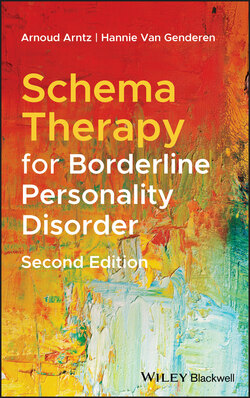Читать книгу Schema Therapy for Borderline Personality Disorder - Hannie van Genderen - Страница 48
Explaining the treatment rationale
ОглавлениеOnce a diagnosis of BPD has been established, the therapist begins to explain the rationale behind the therapy by means of the BPD model and its modes (see ST step by step 1.06). He explains how the patient's current problems are connected to schemas and modes. He further explains how each schema mode brings along with its certain feelings, thoughts, and behaviors (see Appendix A: ST for patients). For a more in‐depth explanation, the patient can refer to a number of relevant chapters in Breaking Negative Thinking Patterns (Jacob, van Genderen, & Seebauer, 2015) or Reinventing Your Life (Young & Klosko, 1994).
Figure 3.2 Mode model with schemas and historical roots Nora
Most BPD patients find the experience of learning about the borderline model enlightening. It offers a clear explanation as to why they experience sudden mood swings and have so little control over their behavior (see Chapter 9, “A Simultaneous Chess Play in a Pinball Machine”). It also offers them the hope that change is possible and that they are not doomed to a life filled with uncontrolled behavior and mood swings.
If the patient finds that this model is not appropriate to her situation, there are usually three possibilities: one is that the individual simply does not have BPD. The second one is that important modes are overlooked, in which case these have to be added to the patient's mode conceptualization. The last possibility is that despite the person having BPD, there is also a very strong protector mode at work. Because of this protector, everything the therapist says is considered to be dubious and unreliable. A variant of this is when the patient recognizes parts of the model, but denies other parts, for example, the punitive parent mode, as acknowledging that mode is yet too frightening. If the latter is the case, the therapist must take more time in building a trusting relationship with the patient and not dwell upon attempting to convince the patient of the schema model.
